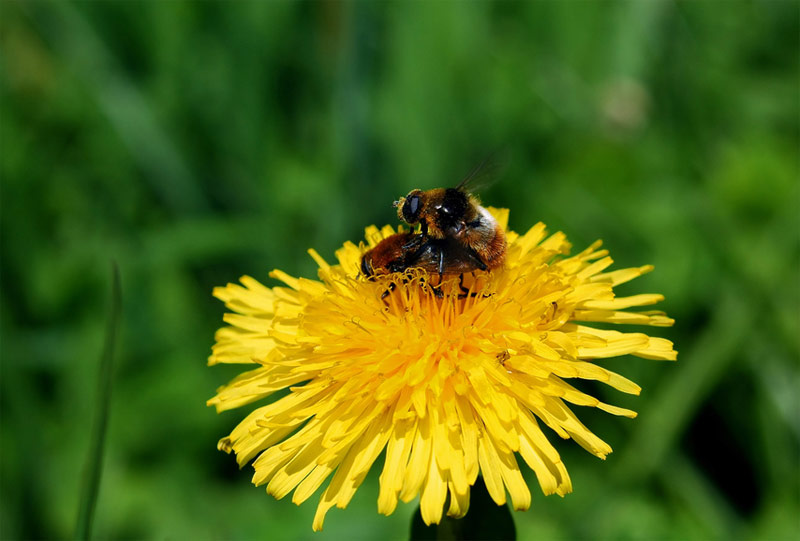Animal Sex: How Bees Do It

Birds do it. Bees do it. … Most have heard the many eloquent ways of saying "it" while still flitting around the word "sex." But how do bees do it?
Turns out, at least for honeybees, sex is an acrobatic, open-air event. A typical honeybee colony comprises a large queen, 200 or so male drones whose sole purpose is to have sex with the queen, and thousands of small, sterile female worker bees.
When it's time to mate, the queen bee will fly to an area where hoards of drones are congregated in the air, waiting for their virgin. (Scientists still don't know how the queen and drones know where to meet up.) Some have said the phenomenon looks like "drone comets," as the drones chase the queen, with continual consolidation and disassembly of the "courting" drones.
When she appears, several of these drones — one at a time — mount her. The drone inserts his endophallus, or inner sac of the penis, into the end of the queen's abdomen and ejaculates semen, Jerzy Woyke of Warsaw University of Life Sciences told LiveScience.
After ejaculation, the drone releases a so-called mating sign, or plates of chitin from his endophallus, into her copulatory orifice, something scientists have suggested may prevent sperm from flowing out of the queen's "vagina." In some drones the tip of the endophallus bursts.
Once mating is complete, the drone falls to the ground and dies in minutes to hours.
This occasional LiveScience series explores how animals mate.
Sign up for the Live Science daily newsletter now
Get the world’s most fascinating discoveries delivered straight to your inbox.
Follow LiveScience on Twitter @livescience. We're also on Facebook & Google+.
Jeanna Bryner is managing editor of Scientific American. Previously she was editor in chief of Live Science and, prior to that, an editor at Scholastic's Science World magazine. Bryner has an English degree from Salisbury University, a master's degree in biogeochemistry and environmental sciences from the University of Maryland and a graduate science journalism degree from New York University. She has worked as a biologist in Florida, where she monitored wetlands and did field surveys for endangered species, including the gorgeous Florida Scrub Jay. She also received an ocean sciences journalism fellowship from the Woods Hole Oceanographic Institution. She is a firm believer that science is for everyone and that just about everything can be viewed through the lens of science.









